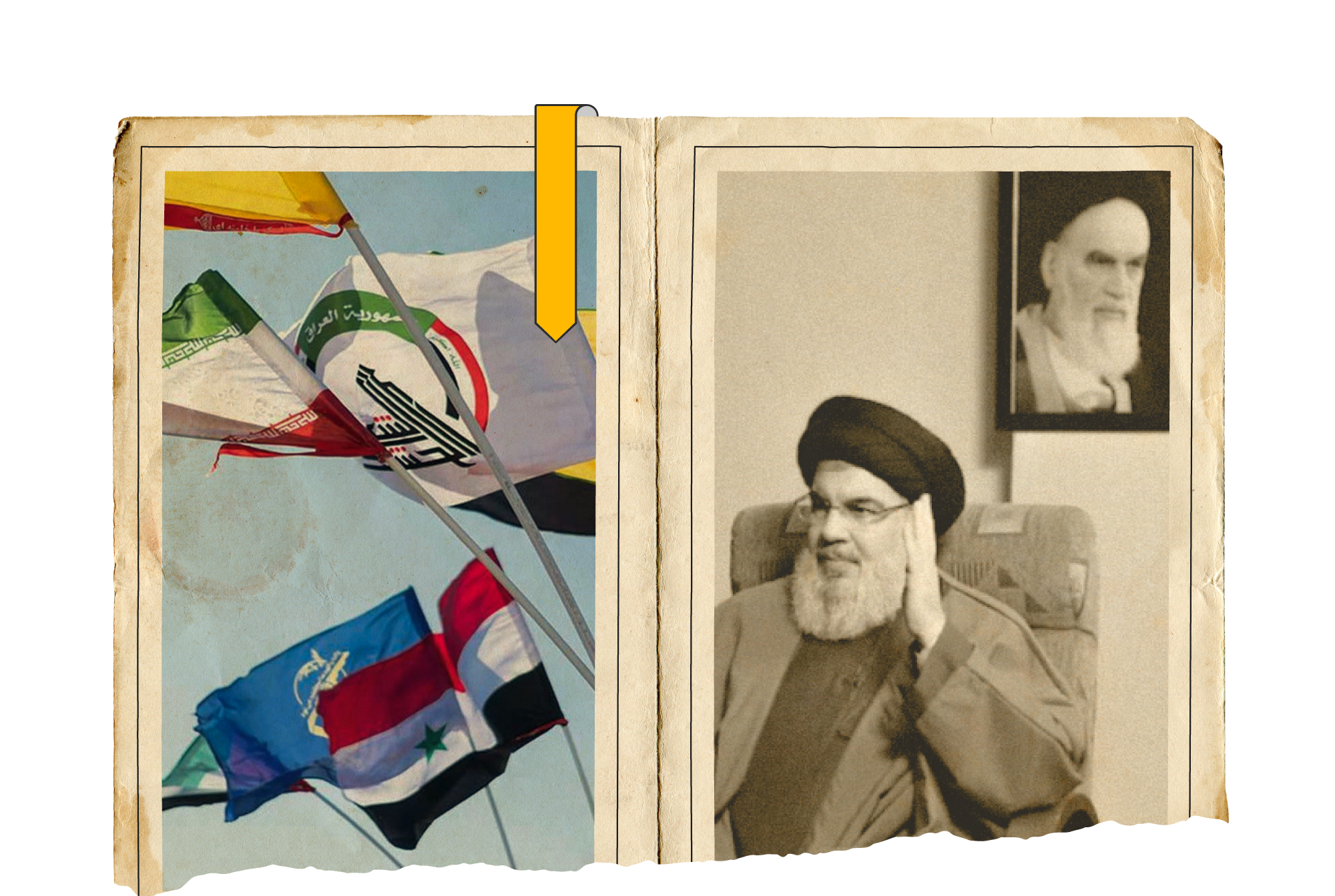
Within the Strategy of Mullahs' Rule in Iran
They used Arab issues to overthrow the ruling regimes and support their loyalists to come to power
On political and military, and even ideological, level, Persians strived to continue their mobilization against the Arabs, with the ultimate goal to control the Arab world and subjugate its states, which they believe will successively fall like dominoes, through the agenda they follow, presented in planting militias in some states.
In this context, the terminological definition directs us to argue that the phenomenon of penetration assumes “the participation of external parties, in conjunction with internal parties, in making political decisions within the infiltrated state in line with the goals of the penetrated state,” which is a fact that can be felt on the ground, especially since the mullahs came to power in (1979) on board a French plane and with Western blessing, no matter how some may claim to be apprehensive about the mullahs, who have always expressed great flexibility in meeting the demands of the West in a way that bypassed the strategic alliance that elevated the Shah to the rank of “Western Gendarmerie” in the region.
Despite the deep-rooted Persian hostility against everything that is Arab, the period of the Shah’s rule did not record a consistent strategy in antagonizing the Arabs, or a tendency to subjugate Arab states to Iran’s agenda, despite the Iranian intervention in some regions with the blessing of the West, as happened with the Sultanate of Oman. In return, the arrival of the mullahs to power made them adopt the Palestinian cause and the project of “exporting the revolution” in order to overthrow the Arab regimes, especially the monarchies, thus subjecting the region to the direct rule of mullahs of Iran.
Iranian penetration of the Arab region has always been in need of a fifth column inside those states, which Iran found in a part of the Shiite minorities who delusionally believed that there are sectarian intersections with Iran. Therefore, they strived to destroy their homes with their own hands and raised slogans of loyalty to the Persians. They embraced the doctrine of the guarding faqhi (successor of Sahib al-Zaman and his deputy), as claimed by Hassan Nasrallah, the head of the Lebanese “Hezbollah”.
Iran has striven to diversify the methods of infiltration and penetration, by resorting to soft power at times and, at other times, by working to create areas of savagery and manage them in a way that enables them to penetrate the region and attach them to Iranian influence, which is the same tactic used by terrorist organizations, which Abu Bakr Naji theorized in his book titled “Management of brutality”.
Western ally and the fifth column contributed to Iranian penetration of the Arab region.

However, brutality tactics adopted by the terrorist organizations (in their Sunni and Shiite manifestations) would not have succeeded in a strong state with historical, constitutional and legal legitimacy. Therefore, “Iran found in the crisis of building the Arab state an important means of penetrating the institutions of the official and unofficial authorities. This enabled it in many of its foreign arms; e.g., National Intelligence Agency, foreign embassies or social and religious development funds.
Iran’s direct or indirect penetration of the Arab states made it in control of the most important joints of the infiltrated state, thus owning the cornerstone of the political decision, ” sometimes it even came to recognizing or not recognizing the ruling institutions themselves” in light of the fragmentation of the political scene and the failure to circumvent a family or an Arab symbol capable of standing up to Iranian ambitions.
It can be said that the success of Iranian penetration in the Arab region was not necessarily based on or due to Iran’s military or political power, but rather the presence of a Western ally or groups that formed a fifth column within the Arab states. At this point, we record that a group of political Islam organizations and the rest terrorist organizations, whether those that claimed their affiliation to the Sunnis or the Shiites, were a malignant shovel that devoured many Arab and Islamic states.
Perhaps the love of reproduction and imitation has been empowered by some religious-political organizations that “expressed their influence on the Iranian revolutionary model and considered it a model that could be imitated. On its part, Iran embraced the principle of Islamic universalism and sometimes openly supported some Islamic movements. Therefore, the survival of the Islamic revolution in power in Iran in itself represents a source of support for many extremist Islamic groups, especially those of a violent nature”.
In sum, it can be said that we are facing three-dimensional conspiracies and parties against our Arab states, as well as a “triangle of evil”, which three sides are a lurking enemy (Iran), another complicit and conspirator (the West), and a third traitor and agent (the “Arab” political-religious organizations loyal to Iran). This prompts us to think of an integrated strategy that takes into consideration this malicious and conspiring trinity.


- Khaled Al-Mutlaq, Iranian Invasion of Arab States… Plans, Consequences and Solutions, Hermon Center for Contemporary Studies website (2021).
- Mahmoud Al-Jazi, Iranian Influence in Arab Region in Light of American Sovereignty Shifts Towards the Region 2003-2011 (Amman, Academics for Publishing and Distribution, 2014).
- Wasfi Aqeel and Khaled Al-Dabbas, Iranian Political Penetration of the Arab Neighboring Countries… A Case Study of Iraq, Bahrain, and Yemen, Journal of Humanities and Social Sciences Studies, Yarmouk University – Jordan, Vol. 45, p. 4 (2018).

